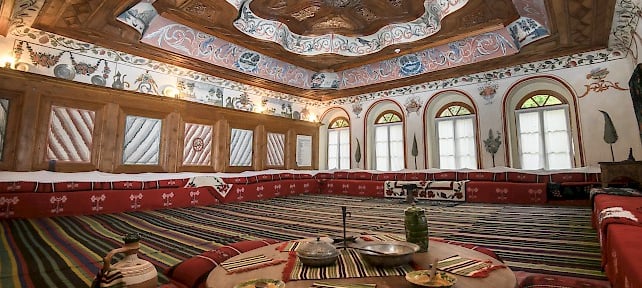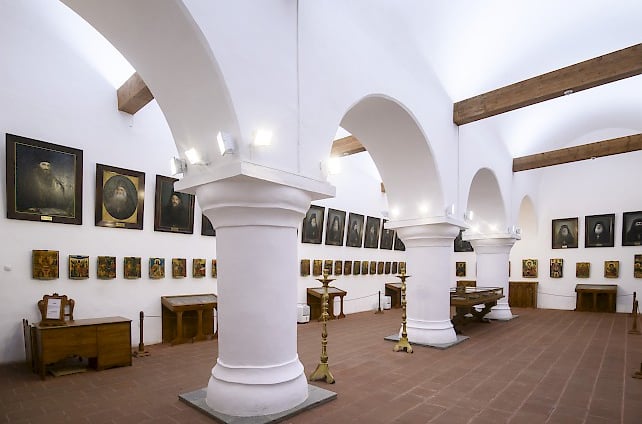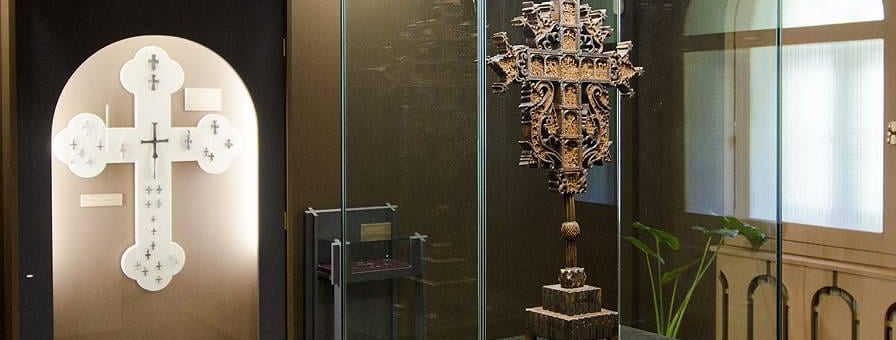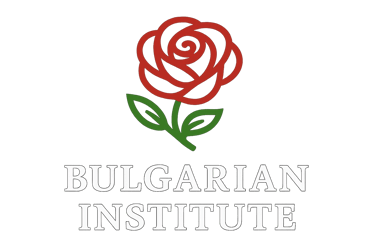Rila Monastery History Museum
Discover the living legacy of Eastern Orthodox devotion, Byzantine artistry, and Balkan resilience in the sacred heart of the Rila Mountains.


A Spiritual Treasure Hidden in the Mountains
High amid the pine-clad slopes of the Rila Mountains, at an elevation that suggests proximity to heaven, lies one of Bulgaria’s most revered symbols of faith and culture: Rila Monastery. While the monastery as a whole is a UNESCO World Heritage Site, its History Museum holds a special place. Nestled in the heart of this monastic complex, the museum houses relics, manuscripts, icons, and liturgical treasures that together create a living narrative of Eastern Orthodoxy in Bulgaria. These objects bear witness to centuries of artistic achievement, spiritual endurance, and cultural adaptation—from medieval bulwarks of faith to revolutionary icons of national revival.
Visitors are greeted by a serene courtyard, framed by whitewashed walls and wooden galleries echoing with Orthodox chants. Here, the past is not archived; it is enacted. The History Museum is not merely a repository but a sacred space that bridges the intangible resonance of worship with tangible artifacts of devotion. Every artifact is imbued with religious significance yet resonates with the story of a nation shaped by faith, resistance, and renewal.
Origins and Foundations: Building a House of Memory
Although the monastery's founding is dated to the 10th century by Saint John of Rila, the concept of a formal museum emerged much later. As Bulgaria regained independence in the late 19th century, the monastery became both spiritual stronghold and national symbol. By the early 20th century, collectors within the monastic community and Bulgaria’s nascent cultural institutions began gathering icons, manuscripts, ritual vessels, and ecclesiastical textiles to preserve a vanishing medieval heritage, ensuring that both spiritual and cultural memory would be safeguarded.
Following earthquakes, fires, Ottoman raids, and neglect, the monastic community recognized that certain artifacts needed stewardship beyond daily worship. A former monks’ dormitory was transformed into exhibition rooms in the early 20th century, creating a sense of continuity between the liturgical function of the monastery and its spiritual memory. By mid-century, the museum matured into a dedicated institution: a place where religious objects could be both venerated and contextualized, where the visitor could glimpse not only divine aesthetic, but the political and historical currents that shaped Bulgaria.
Walking Through History: The Museum Experience
Upon entering the Rila Monastery History Museum, one is met by an atmosphere of quiet reverence. The low lighting, polished wooden floors, and soft murmurs of fellow visitors echo through vaulted corridors. The first room is a witness to medieval faith: centuries-old icons shimmering with gold leaf and centuries-old pigments. Each icon bears traces of restoration—careful evidence that it has been loved, cleaned, and repaired. The signed works of prominent iconographers offer glimpses into hagiographic innovation, while anonymous pieces preserve tradition faithfully.
The next gallery shifts to manuscripts and archival documents. Leather-bound Gospel codices, inscribed in Old Church Slavonic and illuminated with meticulous miniatures, rest under glass. Gothic-style calligraphy mixes with Cyrillic letters in beautifully ornamented headings. Among the manuscripts are charters that mark donations, legal documents securing land for the monastery, and travel accounts written by pilgrims who revered Rila as a center of spirituality and healing. These texts bear witness to a global reach—pilgrims from Byzantium, Slav lands, and even early travelers from Western Europe came to seek solace in the Rila wilderness.
As the route continues, the visitor encounters pulpits carved from wood and bronze, candlesticks with filigree craftsmanship, and folk embroidery that once adorned vestments. Every piece is an artifact of worship, shaped by material culture. Visitors learn how monastic labor included intricate woodworking and silk weaving, and how these crafts were essential to sustaining the abbey economically and spiritually.
Practical Information for Visitors
The Rila Monastery History Museum is located within the north wing of the Rila Monastery complex in southwestern Bulgaria. The monastery is approximately 125 kilometers from Sofia; one may reach it by regional bus lines, guided tours, private vehicles, or organized pilgrimages from Sofia, Plovdiv, and Blagoevgrad. The route ascends scenic mountain roads, passing clear mountain streams, pine forest, and small village churches before reaching the central plaza surrounded by the monastery walls.
Upon arrival, visitors purchase tickets at the main entrance booth. Entry to the History Museum is included in general admission. The museum is open daily except during major Orthodox holidays; hours typically run from 9:00 AM to 5:00 PM. Guided tours in English, German, or Russian are available; visitors may reserve via phone or email. Audio guides in multiple languages may be rented.
The museum and monastery terraces are wheelchair-accessible though some ancient halls and staircases may pose minor challenges due to historical preservation. Comfortable shoes are recommended for navigating cobbled courtyards. A modest dress code is requested: covered shoulders and knees. Appropriate lighting allows visitors to see details of icons, manuscripts, and frescoes without compromising their conservation.
Nearby amenities include a visitors’ center with restrooms, a small café offering local dairy products and mountain teas, and stalls selling printed icons, candles, and local crafts. Overnight stays are possible in monastic guesthouses or privately run hotels in the surrounding village, offering dawn and dusk opportunities to attend services.
Winter months bring snow and temperatures that may close the road briefly; spring and summer offer blossoms, liturgical festivals, and quiet immersion. Autumn pilgrimage is marked by the feast of St. John of Rila in October—a time of special liturgies and a regional celebration of Rila’s spiritual heritage.
Visit the official website here: https://www.rilamonastery.bg/eng.php
Historical and Cultural Anchor: Bulgaria’s Independence Path
During Ottoman rule, Rila Monastery defied time’s flow. While the broader Christian population endured forced conversions, cultural assimilation, or migration, Rila remained a beacon of endurance. Some of the museum’s most striking artifacts belong to that era: anonymous icons untouched by foreign rulers, pilgrim crosses worn by Balkan wanderers, and ledger books recording tithes from fishermen and textile producers across the region. A small cupronickel plate affixed to a meter-high candle recalls a miraculous event in which a wildfire was halted—an oral tradition preserved through daily ritual.
The museum does not shy away from darker chapters: in a secluded chapel stands a worn leather-bound notebook, written by a Rila monk in the early 19th century, exposing Ottoman persecution of clergy and advance warnings given to church communities. Burn marks from a prayer cloth reveal the closeness of violence and prayer. It is a testament to resistance and continuity—but also sorrow born of conflict.
With national liberation in the 19th century, many Bulgarian families began pilgrimage to Rila. Carvings in pews recall visits from cultural luminaries such as Petko R. Slaveykov and Hristo Botev. A pilgrim’s cane etched with early 20th century dates sits next to a tattered copy of Ivan Vazov’s poems. These pieces tell of literary renaissance, national identity, and the monastery’s role as a catalyst for Bulgarian cultural revival.
Modern Narrative: Reconstruction and Conservation
Entering the museum’s final halls, visitors see photographs of the 1834 fire that destroyed much of the monastic complex. Black-and-white shots depict monks watching while smoke billows, parts of the Balkans in ruins. Adjacent displays reveal the reconstruction process, funded by Tsar Alexander II of Russia following the April Uprising. Archival building plans etched into oak panels show vaulted ceilings restored by local craftsmen trained in the miniaturist sculpture styles of the Balkans.
One gallery features tools once used by stone-carvers and masons: chisels used on columns, gypsum molds for the arabesques on the church façade, and color swatches used to match the monastery’s mural palette. Other sections display the 1961 earthquake damage and post-war conservation efforts. A worn recording of the first electrical light turned on in the courtyard stands next to pottery fragments from medieval restoration sites—all emphasizing continuity through rupture, technology through tradition.
Visitors gain a deep sense of place: that the monastery and its museum are living organisms, rebuilt and renewed through time. These visual narratives bear witness to imperishability, to the persistence of iconography, and to Bulgaria as both bastion of antiquity and living, modern state.
Education, Outreach, and Spiritual Continuity
Despite its scholarly treasures, the History Museum does not exist in isolation. It remains intertwined with active monastic life. Visitors can glimpse daily liturgies, attend choir rehearsals, or listen to the monks during nocturnal services. In summer, the museum hosts seminars on iconography, manuscript conservation, and Celestial theology. International students study facsimiles, and publishers reproduce medieval codices from the collection.
Bulgarian families visit in pilgrimage or touristic interest, and children attend workshops replicating candle-making, dyeing icon backgrounds, or writing in Old Church Slavonic. The museum library—which holds thousands of printed theological volumes—remains accessible for researchers, and the monks regularly publish monographs on the collection and Rila’s spiritual importance.
Through UNESCO and Bulgarian cultural ministries, the museum participates in cross-border exhibitions—sending select icons to museums in Greece, Romania, or Russia—and hosting comparable travelling exhibits such as Byzantine icons from Mount Athos.


Icons and Artistic Developments: The Bridge Between Heaven and Earth
Icons form the heart of the museum’s theology and artistry. Medieval Byzantine style icons, solemn and hieratic, cohabit with the expressive warmth of Bulgarian Renaissance painting. A Crucifixion endures at the center of one gallery, its lacquered reds and reflective gold leaf giving the sense of Baroque emotion filtered through Orthodox restraint. Nearby, fresco fragments feature slender saintly figures, hands raised in benediction, their almond-shaped eyes gazing from mural panels once placed in the nave of the monastery church.
Later halls house works from the 17th and 18th centuries, when monastic artists in Rila began experimenting with more naturalistic forms and landscape backgrounds. The museum showcases a masterpiece of this later period: a silver-covered icon of the Virgin Mary, crafted by naval merchants as a votive gift, featuring layers of filigree, semi-precious stones, and hand-engraved inscriptions that record its gift. While the large, central iconostasis of the monastery remains in place during services, the framed icons within the museum tell the story of stylistic evolution, liturgical innovation, and devotional change.
Scriptures as Testaments of Resilience
The manuscript gallery also hosts the most intimate of relics: fragments of parchment inscribed with the lives of Rila’s founder saints, genealogies of the Bulgarian rulers who shepherded the monastery, and travelogues by Ottoman officials awed by the Rila hermits' endurance. A parchment water-stained and meticulously re-stitched stands as a testament to careful preservation through centuries of risk. One distinguished page records a donation from the Bulgarian Tsar Ivan Alexander, whose patronage supported repairs after a damaging earthquake. Its script is both divine decree and historical testimony, speaking of trust in Rila’s sanctity and the ruler’s desire to unify church, culture, and land.
The manuscripts also reveal domestic narratives of famine, pilgrimage, and monastic reform. Some margins contain monks’ notes: excised verses from personal prayer, or receipts for barley barley, reflecting the daily rhythm of life in alliance with spirituality. These documents connect the monk’s contemplation with the monk’s labor, the archived with the lived.
Vestments, Liturgical Textiles, and Ceremonial Splendor
Adjacent to the manuscripts are the physical remnants of ritual spectacle. Gold-threaded vestments embroidered with saints, chalice covers bearing richly colored images of the Last Supper, and fine altar covers are displayed. Beyond aesthetic value, they speak to the monastery’s liturgical richness. A monastic table once stood before an iconostasis; its silk cover still reflects candlelight. A bishop’s cope is stitched with cloisonná metal threads, its hem adorned with peacock feathers symbolic of Paradise in Orthodox iconography.
Close by, a rare Byzantine silk fragment, possibly a robe of a medieval patron, rests on dark red velvet. While small in size, its flowing geometric patterns reflect cross-cultural exchange: Italian silks from the Adriatic trade or imported Byzantine garments gifted to Bulgarian rulers. These pieces reinforce that Rila—once thought of as a remote wilderness—was a locus in the Mediterranean trade routes of spiritual goods, political alliance, and cultural taste.










